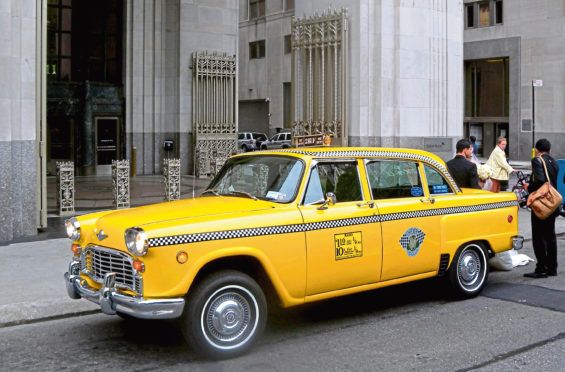Kalamazoo is a town in Michigan, midway between Chicago and Detroit, known to millions thanks to the Glenn Miller hit, I Got a Gal in Kalamazoo.
Its other claim to fame? For decades America’s yellow taxis were built there by Checker Cab, giving rise to Joni Mitchell’s late-1960s song, Big Yellow Taxi.
The early history of Checker was, bluntly, checkered. The 1920s US had a mosaic of small car makers, engine makers, bodywork manufacturers and others who supplied components to each other which eventually were assembled into a complete vehicle.
There were two competing taxi firms in Chicago, Yellow Cabs and Checker Cabs, owned or run respectively by John Hertz and Morris Markin, both with tentacles in many car-related businesses. Each taxi firm sourced its cabs from various firms but eventually a company was set up in Joliet, Michigan, to make taxis. Two years later it moved to Kalamazoo and later became Checker Cab.
The firm focused mainly on dull but dependable taxis but also passenger sedans and occasionally a stylish one-off. It turned to war work from 1942-45, then resumed making taxis and other cars. Its key year was 1959, when it produced what became America’s most ubiquitous taxi, used in almost every US city and seen in countless Hollywood films.
With minor detail changes, it stayed in production until 1982, the last car now exhibited, painted in Chicago green-and-white livery, at Kalamazoo’s Gilmore Museum. Checker stayed in operation, mainly making components for other auto makers, until it went bankrupt in 2009.
I have actually driven a Checker Cab, back in the 1960s when I worked for a taxi and chauffeur-drive firm in Geneva. Black rather than yellow, I recall it was drab, long and cumbersome, with a hard pseudo-leather bench front seat, three-speed gearbox with column shift, a big boot and five seats in the rear compartment.
Even back then, its styling and trim looked dated, but it was robust and hardy, meant for passengers sitting in it for just a few minutes, not for long hauls on motorways. Sadly, it’s not a car I recall with great affection.
